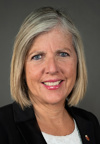SENATORS’ STATEMENTS — Canadian Space Agency
October 18, 2022
Honourable senators, last year, on Christmas Day, a rocket carrying the James Webb Space Telescope launched from French Guiana, ushering in an era of scientific discovery that is set to unveil some of the longest-held mysteries the universe has thus far hidden from us.
Sitting in orbit 1.5 million kilometres from earth and essentially having to unfold its mirrors and tennis-court-sized sun shield remotely, James Webb is a marvel of engineering that is the result of decades of work and collaboration between NASA, the European Space Agency and the Canadian Space Agency. I will, of course, use my time today to discuss how Canada has contributed to this project.
Critical to the operation of the telescope is its Canadian-engineered Fine Guidance Sensor, which was designed to find and lock onto cosmic targets and is crucial for the long-exposure imagery needed for the telescope to provide the kind of imagery required for quality science to be conducted.
Some of you might be familiar with one of the first images released by the James Webb team in July. It was a field of stars and galaxies littered across a scarlet background, with some stars blacked out with refraction points extending beyond. This was captured using the Fine Guidance Sensor. Though just a test image, it gave a hint of what was to come.
The Canadian Space Agency’s other contribution was the Near Infrared Imager and Slitless Spectrograph, or NIRISS for short. Using a camera sensitive to infrared wavelengths, the NIRISS captures the infrared light emitted by objects and gathers information about the spectra of distant planets. This is where some of the real science will emerge from James Webb, and includes its ability to examine the composition of the atmospheres of exoplanets orbiting other stars. In doing so, scientists will be able to determine if these planets have water, methane, oxygen and other molecules associated with life here on earth.
Senators, if you’re wondering and if you’ve forgotten, this was about the third month of your Grade 11 physics class, when you did light refraction, telescopes and all kinds of things in that area.
In exchange for our contribution to this project, Canadian scientists are guaranteed a share of Webb’s observation time. This means that our scientists will be at the forefront of groundbreaking scientific discoveries, which could include not only if other planets might harbour life but when some of the first stars and galaxies formed some 13 billion years ago, as well as the mysteries of dark matter, which makes up roughly 85% of the mass in the universe but we know very little about.
I look forward to learning what they have to tell us, and I’m sure you do as well. Thank you, meegwetch.

